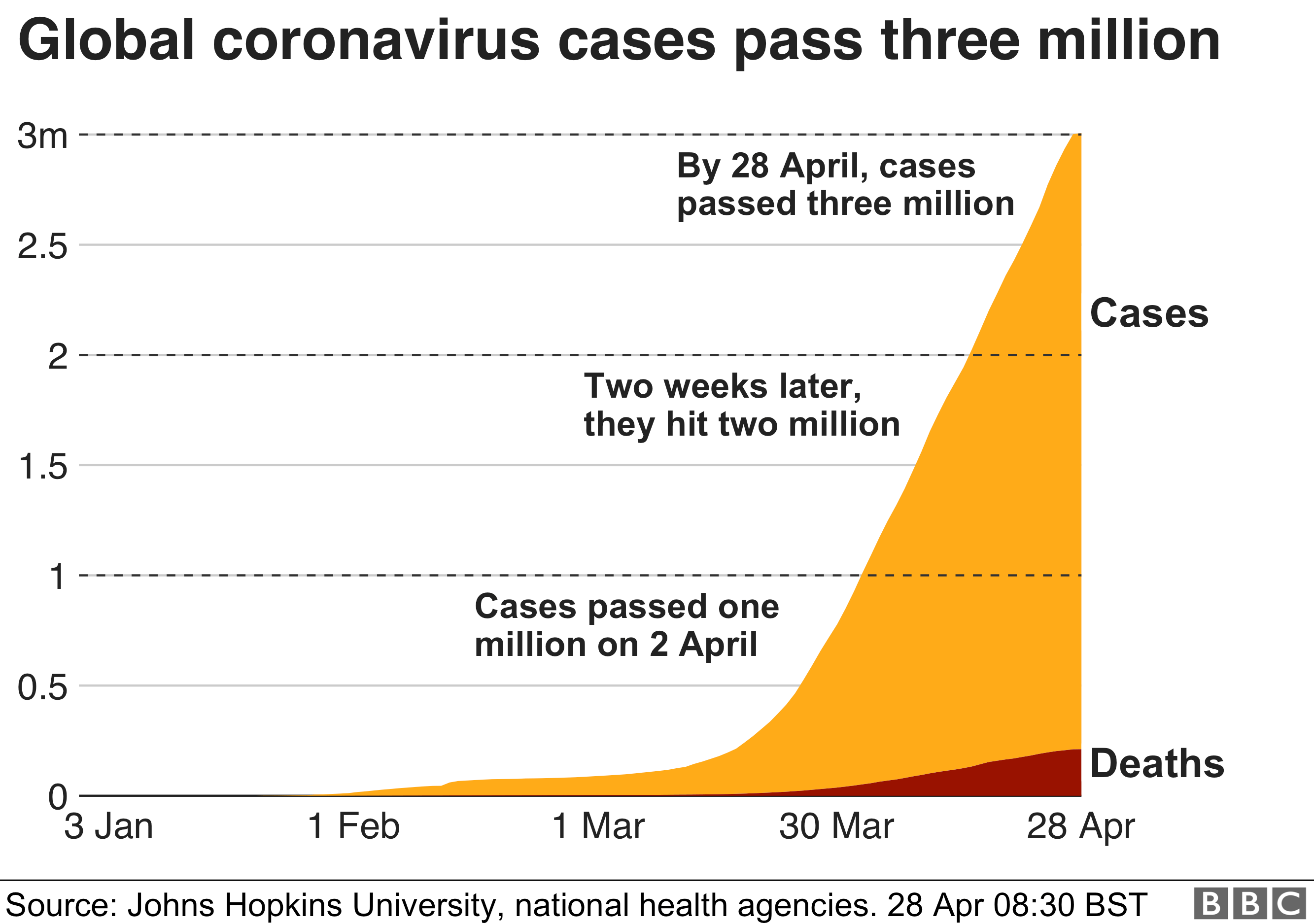Coronavirus pandemic: Tracking the global outbreak

Coronavirus is continuing its spread across the world, with more than three million confirmed cases in 185 countries. At least 200,000 people have died.
The United States has more than four times as many confirmed cases as any other country.
This series of maps and charts tracks the global outbreak of the virus since it emerged in China in December last year.

The virus, which causes the respiratory infection Covid-19, was first detected in the city of Wuhan, China, in late 2019.
It is spreading rapidly in many countries and the number of deaths is still climbing.

Note: The map and table in this page uses a different source for figures for France from that used by Johns Hopkins University which results in a slightly lower overall total.
The US has by far the largest number of cases, with nearly one million confirmed infections, according to figures collated by Johns Hopkins University. This is more than 10 times the official number reported by China.
The US also has the world’s highest death toll, with the number of fatalities approaching 60,000.
Spain, Italy, France and the UK – the worst-hit European countries – have all recorded more than 20,000 deaths.


Note: The past data for new cases is a three day rolling average
In China, the official death toll is just over 4,600 from about 84,000 confirmed cases. Numbers for deaths jumped on 17 April after what officials called “a statistical review”.
Critics of the Chinese government have questioned whether the country’s official numbers can be trusted.
The country’s authorities have now lifted many of the stringent measures they brought in to bring the disease under control, including a ban on all travel to and from Wuhan – the first place to go into lockdown.
The outbreak was declared a global pandemic by the World Health Organization (WHO) on 11 March. This is when an infectious disease is passing easily from person to person in many parts of the world at the same time.
While more than three million people are known to have been infected worldwide, the true figure is thought to be much higher as many of those with milder symptoms have not been tested and counted.
New Zealand, however, says it has stopped community transmission of coronavirus, and is set to move out of its toughest level of social restrictions. From Tuesday, some non-essential businesses, healthcare and education activity will be able to resume, but most people will still have to stay at home and avoid all social interactions.
While some other countries are also beginning to ease restrictions where disease peaks are thought to have passed, such as in Europe and South Africa, others are only now starting to impose them as cases and deaths begin to rise.
Across Latin America, where many economies are already struggling and millions live on what they can earn day-to-day, there are concerns about the strain the growing number of virus cases could put on health care systems. Of particular concern are Ecuador and Brazil.
Ecuador has already seen its health system collapse – thousands have died from the virus and other conditions that could not be treated because of the crisis. While Brazil has also seen a steep rise in both cases and deaths, with every state in South America’s largest country affected.
![]()

 mapped
mapped






